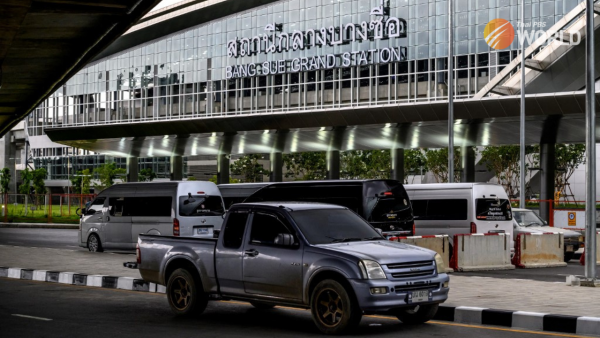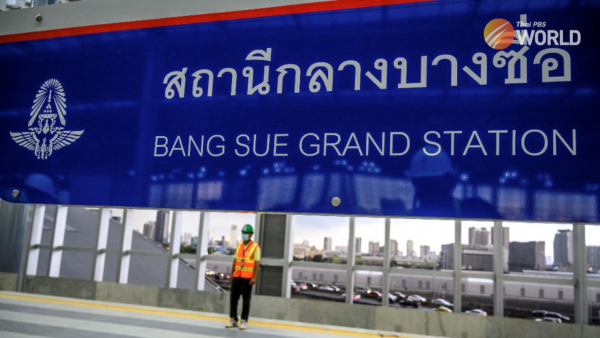Bangkok’s Bang Sue Grand Station – touted as Southeast Asia’s most modern rail terminus – opened with little fanfare last year as COVID-19 dominated headlines. Its role as the national rail hub has also been delayed by well over a year.
However, the pandemic also made Bang Sue Grand Station a household word among Thais. Hundreds of thousands flocked to the station between May 2021 and September this year to get vaccinated against the new coronavirus. Bang Sue served as the city’s main vaccination center, delivering more than 6 million shots over 16 months.
Now that the infection rate has fallen and a central vaccination center is no longer necessary, Bang Sue Grand Station can go back to its original job – serving as a railway hub.
Bangkok’s new central station
From January next year, all commercial trains will switch from the old Bangkok station of Hua Lamphong to Bang Sue, explained Nirut Maneephan, State Railway of Thailand (SRT) governor.
“Some 56 such trains leave the capital daily,” he said.
Commercial trains refer to Special Express, Express, and Rapid trains that have first-class and sleeper carriages. Most of these trains serve long-distance routes from Bangkok to cities such as Chiang Mai, Ubon Ratchathani, Songkhla or Yala.
Transport Minister Saksayam Chidchob had pushed hard for Bang Sue Grand Station to take over from the historic and hugely popular Hua Lamphong station since late last year, but to no avail.
Now, however, major types of railway services are finally about to shift to the new national hub with Hua Lamphong catering to just short-haul or ordinary trains, that stop at all stations and have no first-class cabins.
In preparation for its larger role, Bang Sue started selling tickets for long-distance trips on November 1.

Bang Sue Grand Station
Built between 2013 and 2019 with a budget of 34.14 billion baht, Bang Sue Grand Station is more than three times larger than Hua Lamphong at nearly 300,000 square meters. It has 24 platforms – compared with Hua Lamphong’s 14 – and capacity to serve more than 600,000 passengers daily.
The station is packed with world-class facilities. Thanks to 5G technology, passengers will be greeted by SRT robots that can communicate in both Thai and English. The robots will provide passengers with travel information, recommendations on attractions, and basic assistance. For instance, the SRT automated helpers can guide passengers to the right platform if they lose their way. They can also alert their human colleagues when extra help if needed.
Another example of high-tech automation at Bang Sue is the smart wheelchairs, which are available to take passengers who can’t walk anywhere in the station without human help.
Security in the station is also AI-enabled, with video from the more than 120 security cameras monitored via artificial intelligence. The system also issues alerts in real-time, so human staff can rush to help passengers in cases of emergency or if they stray into dangerous zones.

Royally granted name
His Majesty the King granted an auspicious name to Bang Sue Grand Station in early September, following a request from the Cabinet.
The royally bestowed name of the station is “Krung Thep Aphiwat Central Terminal”, which means Glory of Bangkok, reflecting the station’s key role in public transportation.
It will also serve as a key city transport hub as it is connected to the Red Line and Thailand’s three main airports, as well as the Airport Rail Link and the MRT Blue Line. It will serve, too, as a stop in the future rail line linking Kunming in China with Singapore.
Bang Sue has strong road connections and can be accessed conveniently via Bangkok’s network of main roads and expressways.
Located in the capital’s Chatuchak district, this shiny new station is expected to spur economic development, reduce the cost and time spent on travel and smoothly connect Thailand to its neighbors.
By Thai PBS World



